Alligator biologists and natural resource managers need your help! Be a citizen scientist and help track alligator health and body condition throughout the greater Everglades ecosystem.
There has been an increase in reports of very skinny alligators, and help from the public is needed to better understand where and when this problem occurs. When visiting the Everglades, you can be a citizen scientist and help identify and document very skinny alligators. Carefully observe and photograph an alligator from a safe distance, then classify its body condition based on the guidelines below. In addition to the tools you have on hand (smartphone, binoculars, etc.), use this fact sheet as a simple way to classify the body condition of alligators.
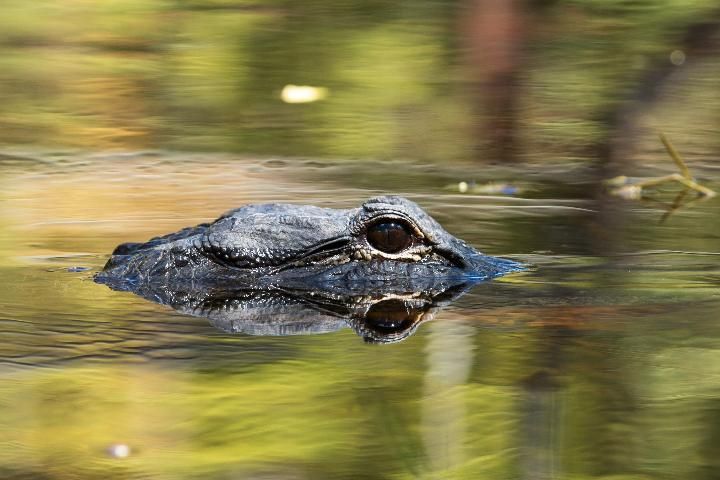
Credit: Justin Dalaba, UF/IFAS
Why do we care?
The American alligator (Alligator mississippiensis) plays an important role in the Everglades. Alligators affect nearly all aquatic life in an ecosystem as top predators and help provide habitat for other animals as ecosystem "engineers." Without the holes and trails that alligators build, there would be fewer refugia, or hiding places, for fish and wading birds during the dry season, and without their nest mounds, there will be less of the high ground that land animals need during flooding in the Everglades. For more information on the importance of alligators in the Everglades, visit https://edis.ifas.ufl.edu/uw358.
In turn, alligators are also affected by their environment. Changes in depth, timing, and flow of freshwater can affect their health (indicated by relative fatness) and their abundance. Alligators' responses to these changes make them an effective indicator species: when their populations decline or when individual alligators look thin, it's a sign that their Everglades ecosystem would benefit from restoration of more natural patterns of water levels and flows.
The natural freshwater flow through the Florida Everglades is highly modified by artificial canals and levees (for more information, visit: https://edis.ifas.ufl.edu/uw349). Monitoring ecological indicators like the American alligator tells managers how different areas of this large ecosystem are doing. This fact sheet serves as a guide on scoring alligator body condition and reporting sightings of very skinny alligators to researchers and managers.
Body condition describes an animal's overall physical health and provides insight into how an animal is coping with its environment. For the American alligator in the Everglades, critical environmental factors include water quality, prey availability, and water temperature. The use of a body condition scoring system (BCS) is a simple way to assess an alligator's body condition from a safe distance.
Body Condition Score
To make it easy for citizen scientists to report very skinny alligators in the greater Everglades, biologists have developed a body condition score (BCS) from 1 to 3, where 1 = very skinny (emaciated), 2 = thin or slender (usual for Everglades alligators), and 3 = normal for their entire range.
The following anatomical terms are important to understand when describing the physical body condition of alligators:
- Limbs—Four total; two front and two rear legs
- Jowls—Lower cheek area between the end of the snout and front limbs
- Spinal column—Dorsal area between front and rear limbs
- Tail girth—Thickness of tail behind rear limbs
Energy reserves are stored as muscle and fat, especially in the jowls and base of the tail. Healthy alligators have full jowls and plump tails, while unhealthy alligators have shrunken jowls and thin tails.
Use the following body condition scores to classify the health and condition of an alligator based on appearance of their physical anatomy:
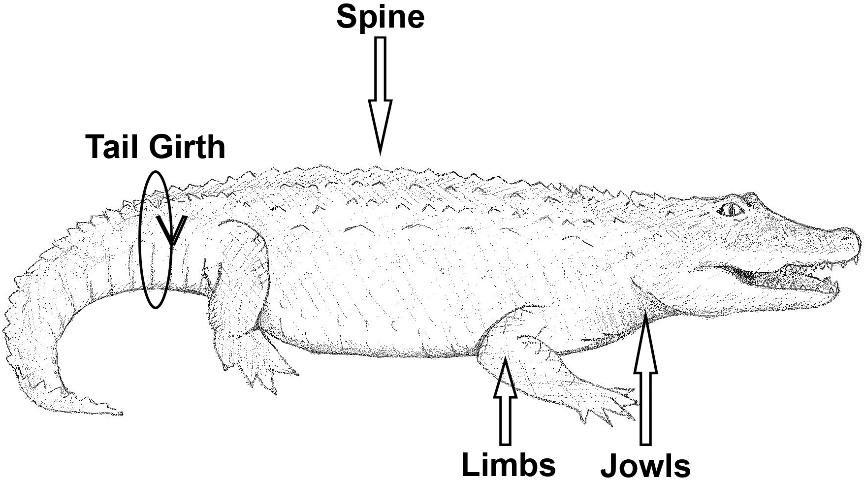
Credit: Jenna Cole, UF/IFAS
BCS 01—Very skinny (emaciated)
- Shrunken jowls and thin neck
- Very bony with thin limbs
- Very visible spinal column
- Wrinkled skin
- Very bony or thin tail
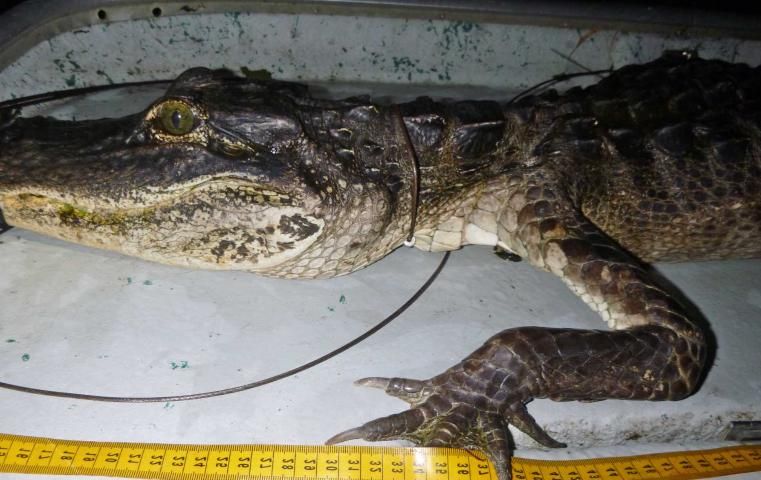
Credit: UF/IFAS
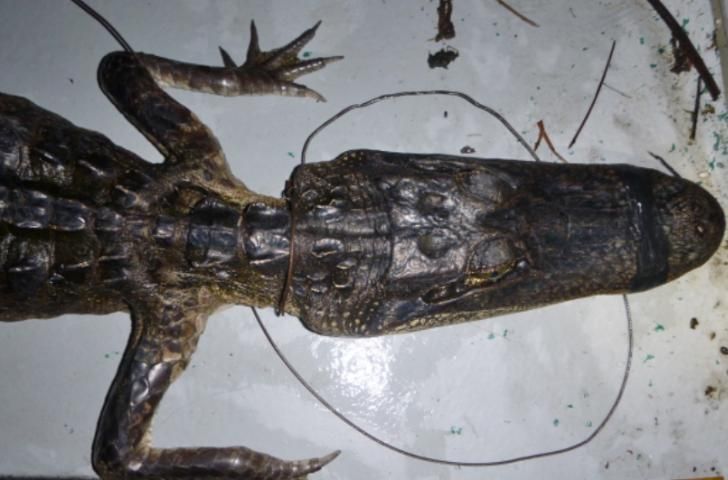
Credit: UF/IFAS
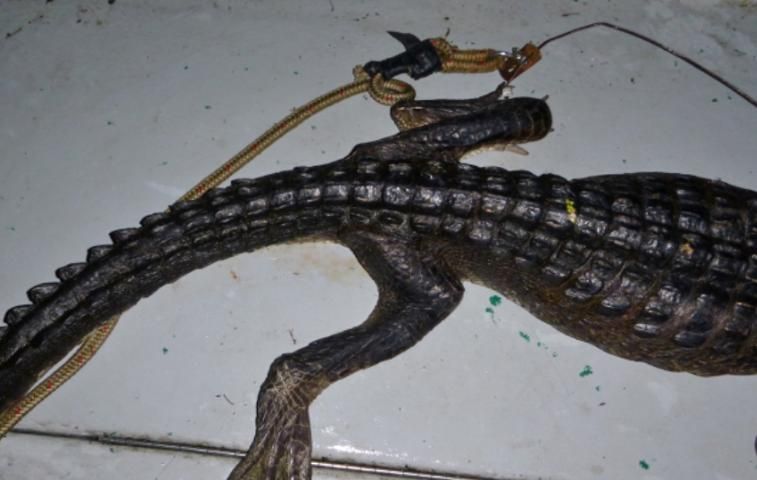
Credit: UF/IFAS
BCS 02—Thin or slender
- Lean jowls
- Thin limbs
- Barely visible spinal column
- Lean tail and tail girth
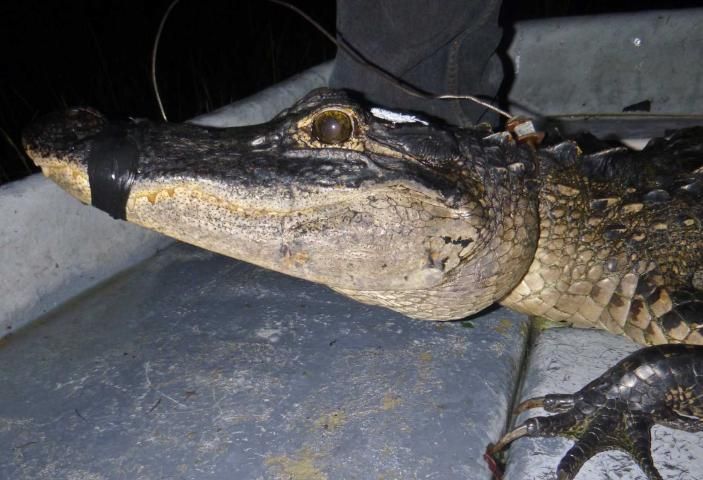
Credit: UF/IFAS
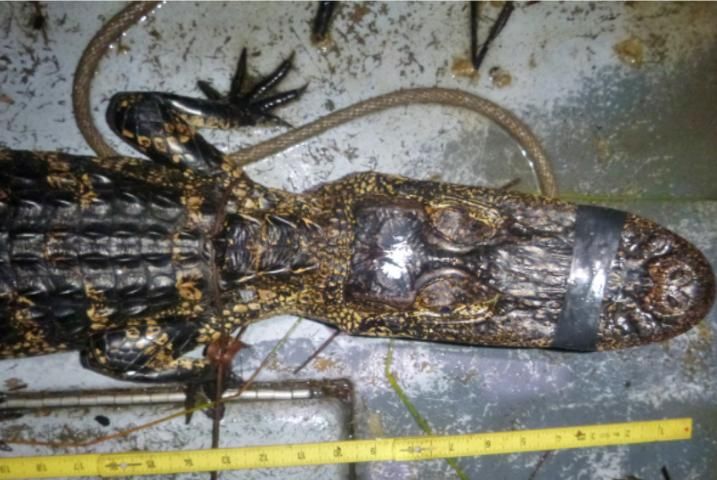
Credit: UF/IFAS

Credit: UF/IFAS
BCS 03—Normal
- Full, fleshy, or bulky jowls
- Muscular, fleshy limbs
- No visible spinal column
- Plump tail and larger tail girth
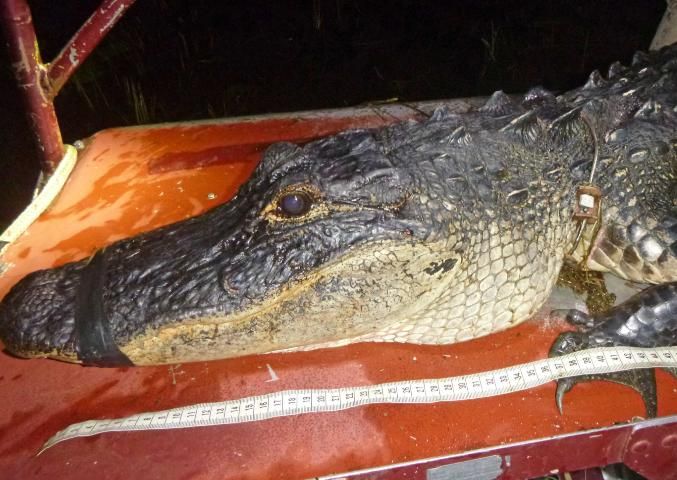
Credit: UF/IFAS
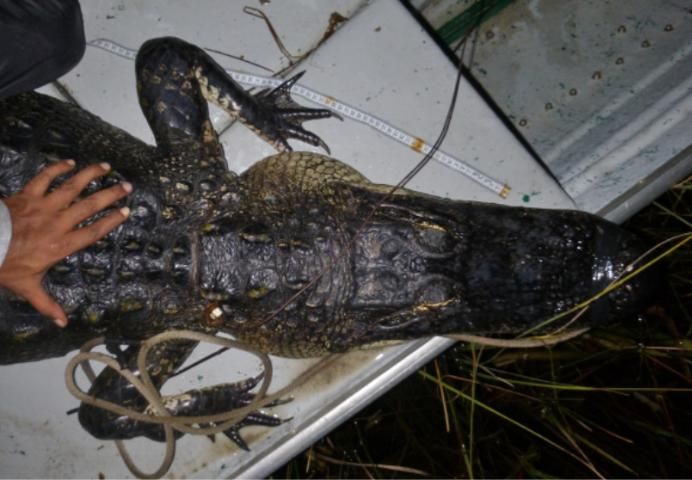
Credit: UF/IFAS
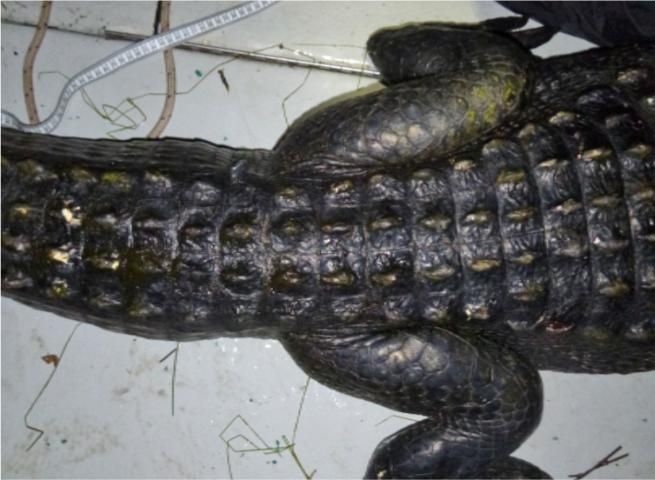
Credit: UF/IFAS
How can you help?
If you see a very skinny alligator:
- Take a picture from a safe distance (recommended at least 20 feet)
- Note the exact coordinates at the location (can drop a pin on smartphone map)
- Add your observation to the Alligator Body Condition project on iNaturalist by visiting: https://www.inaturalist.org/projects/alligator-body-condition
Scan this QR code or visit https://www.inaturalist.org/projects/alligator-body-condition to report sightings of very skinny alligators and help resource managers better understand this problem.

For More Information Contact
Frank J. Mazzotti
UF/IFAS Fort Lauderdale Research & Education Center
3205 College Ave., Davie, FL 33314
Email: fjma@ufl.edu